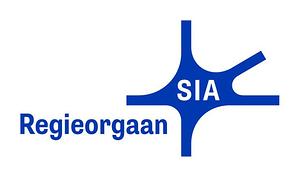There is an increasing social and political concern about the impact on humans, animals and the environment due to the use of herbicides (crop protection products) in agriculture. There is a widely supported ambition in the Netherlands to make crop protection more sustainable, to limit the emission of harmful substances and to cultivate in a healthy and sustainable manner with an economic perspective. In this project we develop techniques that contribute to these ambitions.
Research question
Which robotisation techniques can be further developed within a period of 2 years into technically new applications for demonstrable autonomous agro-production systems, so that the use of herbicides for strip cultivation can be significantly reduced?
Effective weed control is essential for profitable and high-quality agriculture and horticulture. Current weed control makes intensive use of herbicides. However, there is social and political concern about the harmful effects of these agents on humans, animals and the environment. New insights into the harmfulness of herbicides in agriculture mean that the number of permitted agents is increasingly limited. Mechanical weed control is already used in organic cultivation, but it is very labor-intensive, expensive and increasingly difficult to man. A solution for organic cultivation also means a solution for conventional cultivation with which the use of herbicides can be greatly reduced.
Project approach
In this project, Saxion's Mechatronics and Aeres Precision Agriculture lectorates, together with agricultural and technical SMEs, bundle the knowledge to develop techniques that allow small robots to automatically recognize and remove weeds without using herbicides. These techniques enable growers to grow crops sustainably, without emissions and without residues. Selective row weed removal has been identified as the next step in autonomous weed control.
Project goal
The objectives of the consortium are aimed at developing technical applications that are compatible and can be integrated with current commercially available robots (AGVs). Design-oriented research is used as a research method to answer the research question. The results are techniques that can be applied directly at the grower and have been demonstrated and validated in the field. The knowledge gained in the project is widely shared through the branch organization Stichting Teelt Overleg Groenten (industrial growers), Groene Kennis Cooperatie, Mineral Valley, BO Akkerbouw, AgroFoodCluster and the community and the website vollegrondsgroente.net.
Duration project
Start project: 01-09-2020 - End project: 31-12-2023
Partners

Abemec
Website
Aeres Hogeschool Dronten
Website
Agri Technics
Website
de Hooge Kamp
Website
Impact Smart Solutions
Website
Newton
Website
Pixelfarming Robotics
Website
Regieorgaan SIA
Website

Stichting Teelt Overleg Groenten
Website
Vollegrondsgroente.net
WebsiteMore information about the project?
